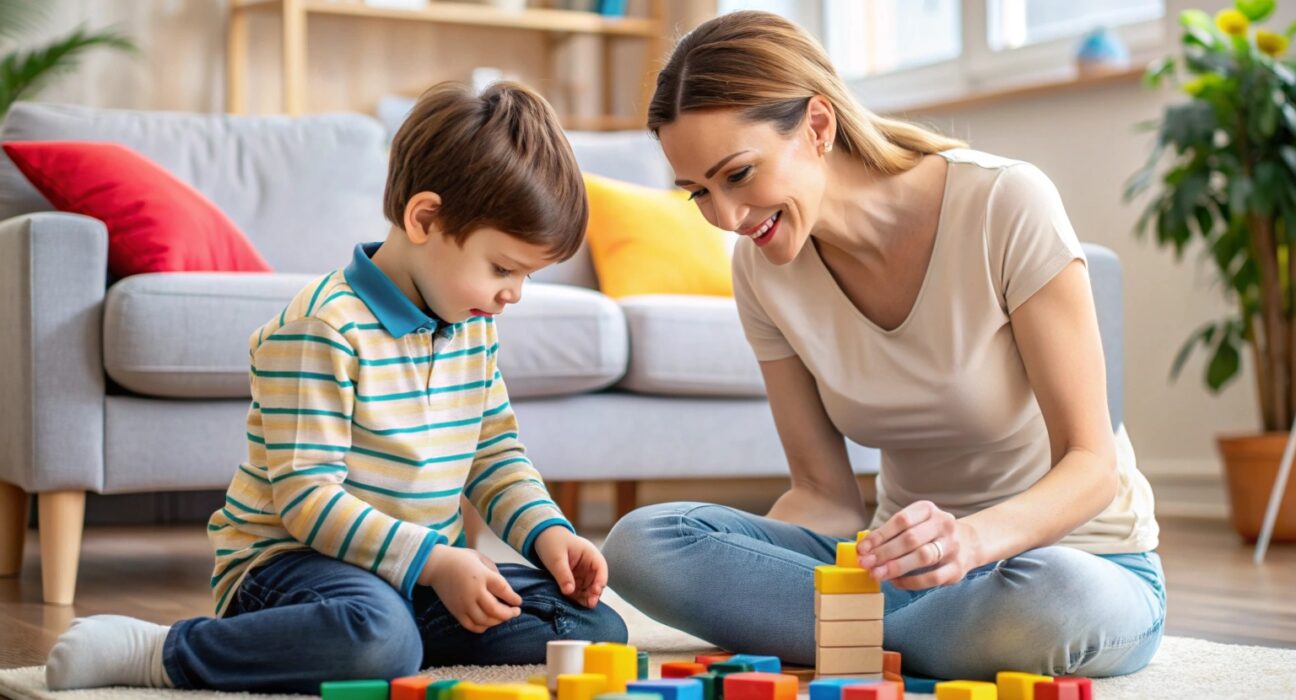Adapting the home environment for an autistic child is crucial for their well-being and development. A secure and adapted space can help reduce challenging behaviors, promote autonomy, and foster a harmonious family atmosphere. This article aims to provide practical advice for creating a welcoming and safe home environment for autistic children.
Creating a Safe Space
Physical Safety
Physical safety is paramount for any child, especially those with special needs. Here are some measures to take:
- Securing Furniture and Objects: Attach heavy furniture to the walls to prevent tipping. Store dangerous items out of reach and use safety locks on cabinets and drawers containing chemicals or sharp tools.
- Using Safety Locks: Install locks on windows and doors to prevent unsupervised exits. Ensure that emergency exits are easily accessible and that the child knows how to use them in case of need.
Sensory Safety
Autistic children can be very sensitive to sensory stimuli. To create a sensory-friendly environment:
- Reducing Excessive Sensory Stimuli: Minimize loud noises by using rugs, thick curtains, and earplugs if necessary. Use soft lighting and avoid flickering fluorescent lights.
- Creating Calm Zones: Set up spaces where the child can retreat in case of sensory overload. These areas should be calm, with soothing colors and minimal visual distractions.
Organizing Living Spaces
Play and Learning Space
A dedicated play and learning space can help structure the child’s activities:
- Specific Zones: Create specific zones for different activities (playing, reading, therapy). Use shelves and storage bins to organize toys and educational supplies.
- Sensory Materials: Incorporate sensory materials such as stress balls, weighted blankets, and tactile toys to encourage sensory exploration.
Relaxation Space
A relaxation space is crucial for helping the child unwind:
- Calm Corner: Set up a calm corner with cushions, blankets, and books. Use tents or small hideaways to create retreat spaces.
- Soothing Elements: Introduce soothing elements like aquariums or water fountains that can help reduce anxiety.
Adapting Daily Routines
Visualizing Routines
Autistic children often benefit from structured and predictable routines:
- Visual Schedules: Use visual schedules to structure the day. Include pictograms to illustrate different activities.
- Reward Charts: Introduce reward charts to encourage positive behaviors and help the child understand expectations.
Transition Rituals
Transitions can be challenging for autistic children. Here are some strategies to make them smoother:
- Visual or Auditory Cues: Use visual or auditory cues to signal transitions between activities.
- Transition Rituals: Create transition rituals like songs or games to help the child move from one activity to another.
Encouraging Autonomy
Accommodations for Autonomy
Adapt the environment to encourage the child’s autonomy:
- Accessibility: Ensure that furniture and equipment are accessible and easy to use. For example, place clothes at a height where the child can easily reach them.
- Visual Aids: Use visual aids to guide the child through daily tasks, such as washing hands or getting dressed.
Technological Supports
Technology can be a great help for autistic children:
- Educational Apps: Use educational apps and tools to support learning and communication.
- Interactive Aids: Introduce interactive visual aids for daily activities.
Promoting Social and Family Interactions
Community Spaces
Create spaces where the whole family can gather and interact:
- Common Areas: Set up common areas for family activities like meals or game nights.
- Cooperative Games: Encourage cooperative games to promote positive interactions among family members.
Family Rituals
Family rituals can strengthen bonds and provide reassuring structure:
- Regular Rituals: Establish regular family rituals like family meals or weekly outings.
- Child Participation: Involve the child in family decisions appropriate to their level of understanding to make them feel included.
Conclusion
Adapting the home environment for an autistic child takes time and patience, but the results are worth it. By following these tips, you can create a safe, calming, and stimulating space that helps your child thrive. Feel free to adjust these recommendations based on your child’s specific needs and seek additional advice from professionals.
Call to Action
Join online or local support groups to exchange tips and experiences with other parents. Consult additional resources and professionals to get personalized advice and information tailored to your needs.







1 Comment